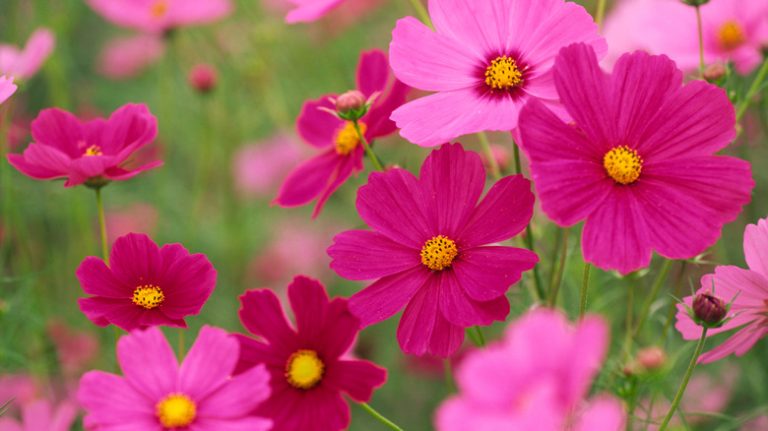Pests can be a major problem for anyone who loves gardening and landscaping. They can damage plants’ foliage, thatch, and shrubs, and impact the overall health and aesthetics of your garden. But what exactly are pests, and how can you effectively manage them?
Pests can include a wide range of organisms, from insects to weeds and diseases. One of the most common pests is the rose bush thorn, which causes damage to roses by infecting their legs and legs. This widespread pest can become a heartbreaker for rose gardeners, but with proper management techniques, it can be controlled.
Management of pests must begin with an understanding of what causes them to develop and spread. Factors such as climate, planting materials, and the presence of certain cultivars can all contribute to the likelihood of pest populations. The first step in managing pests is to be aware of the signs and symptoms they cause, as this will help you identify and treat them in a timely manner.
There are several ways to manage pests, including biological control, chemical applications, and cooperative statewide efforts. Biological control involves the use of natural predators or parasites to control pest populations. This can be a more eco-friendly option, as it avoids the use of chemical pesticides. Chemical applications, on the other hand, involve the use of miticides and other chemical substances to directly treat pests.
In conclusion, managing pests is crucial for maintaining a healthy and beautiful garden. By understanding the factors that contribute to pest populations and implementing appropriate management techniques, gardeners can effectively control pests and prevent damage to their plants. For more information on pest management, refer to the provided references for further reading.
Rose Rosette Disease A New Disease of Roses in Florida
Rose rosette disease, also known as rosette, is a new and unusual disease that has been causing major problems for rose bushes in Florida. It is caused by a specific phytoplasma, a type of bacteria-like agent, called Rose Rosette Virus (RRV). This disease is known to be vectored by a tiny mite, called Phyllocoptes fructiphilus, which is also responsible for transmitting the virus to healthy roses.
The first signs of rose rosette disease can usually be seen in the leaves, where a discoloration, or mosaic pattern, can be observed. The infected leaves become thickened and distorted. They may also develop an unusual red coloration. As the disease progresses, the entire bush can become infected, with stunted growth, clustering of stems, and the production of an excess number of thorns. In severe cases, the infected roses may even develop a broom-like appearance.
It is crucial to implement effective management strategies for rose rosette disease. In Florida, the University of Florida Cooperative Extension Service has been studying this disease and has provided valuable references on its management. Cultural practices, such as pruning and removing the infected plant materials, have been found helpful in reducing the disease incidence. Additionally, certain rose cultivars, such as the “Heartbreaker” and “Widespread” cultivars, have shown some level of resistance to the disease. However, since there is currently no known cure for rose rosette disease, prevention and early detection are key in managing this devastating disease.
Symptoms
Pests can cause various symptoms in plants, including distortion, discoloration, and clustering. These symptoms can occur due to a combination of factors, such as environmental conditions, plant health, and the presence of pests.
For example, in roses, certain pests like mites can cause symptoms such as witches-broom and russeting. Witches-broom is a widespread symptom characterized by the clustering of brooms, which are woody structures that resemble broomsticks. Russeting, on the other hand, refers to the brownish coloration of leaves caused by the feeding activity of pests.
Rosette is another symptom commonly observed in roses. It is characterized by the abnormal elongation and thickening of the stems, resulting in a rosette-like growth pattern. This symptom is caused by a vector-borne disease known as Rose Rosette Virus.
The symptoms and specific causes vary among different plants and pests. It is important to correctly identify the symptoms to effectively manage pest problems. Early detection and proper management are crucial to prevent the spread of diseases and minimize damage to plants.
To manage pests and their symptoms, a combination of cultural practices and chemical control methods can be employed. Cultural practices, such as pruning diseased plants and ensuring healthy growing conditions, can help reduce pest populations and the spread of diseases. Additionally, specific chemical agents can be used to control pests, but their application should be done in a targeted and safe manner, following the instructions provided by manufacturers.
In some cases, it may be necessary to remove severely diseased plants to prevent the spread of pests to neighboring plants. It is also important to regularly monitor plants for signs of pests and promptly treat any infestations to prevent further damage.
Understanding the symptoms caused by pests is an essential part of managing pest problems in gardens, landscapes, and homes. By identifying and addressing the underlying causes, pest populations can be effectively controlled, ensuring the health and vitality of plants.
History of Rose Rosette Disease
Rose Rosette Disease, also known as RRD, is a viral disease that affects roses. It was first reported in the early 1940s in California, but its origins are still unclear. The disease quickly spread to other states and is now a major concern for rose growers across the country.
RRD is caused by a specific agent called Rose Rosette Virus (RRV), which is transmitted by a tiny mite called Phyllocoptes fructiphilus. These mites feed on rose plants and spread the virus from infected plants to healthy ones. The disease can also spread through grafting of infected rose cultivars.
The symptoms of RRD are quite distinct and easy to identify. Infected rose bushes often develop thickened, elongated, and deformed stems, a condition known as witches-broom. This abnormal growth gives the rose bushes a clustered appearance, with many small branches growing from a single point. The leaves on these branches are often distorted and elongated, resembling witches’ brooms.
One of the challenges in controlling RRD is that there are no effective treatments available. Once a rose bush is infected, it is usually best to remove it immediately to prevent the disease from spreading to other nearby plants. Additionally, there is currently no known cure or way to reverse the effects of the disease.
Efforts have been made to develop resistant rose cultivars, but a widespread, resistant variety has yet to be introduced. Cultural controls, such as regularly inspecting rose plants for symptoms and promptly removing any infected plants, can help manage the disease. It is also important to control the mite vectors by using appropriate pest control methods.
The impact of RRD on rose cultivation has been significant. Many old rose gardens, including the famous rose garden at the White House, have had to be replanted or abandoned due to the disease. Rose enthusiasts continue to search for solutions and preventative measures, hoping to find a way to control or eradicate this devastating virus.
Disease Cycle
In order to effectively control pests, it is important to understand the disease cycle. Diseases in plants, such as roses or woody shrubs, are caused by various factors that infect and harm them. One of the major diseases that affects roses is rose rosette, which is highly contagious and can lead to the death of the plant.
The disease cycle of rose rosette begins with a source of infection, usually a specific agent or a susceptible plant. The disease is harbored by pests like mites or insects, which spread the virus to healthy plants. Windham and Tzanetakis (source) have found that the virus can spread rapidly and become widespread in a short period of time.
Once the disease infects a susceptible plant, it develops and causes unusual growth patterns, such as elongation of branches or the formation of brooms. Infected plants often exhibit distorted and highly elongated growth, giving them a characteristic “witches’ broom” appearance. The disease can then be spread to other plants through various means, such as replanting infected shrubs or grafting onto healthy plants.
The disease cycle of rose rosette is also influenced by environmental factors, such as temperature and humidity. For example, miticides are commonly used to control pests like mites that spread the disease. However, their effectiveness varies depending on the time of application and the specific chemical used.
In order to control the spread of rose rosette, it is important to monitor plants closely, especially after replanting or when pests and diseases are known to be present. If the disease is detected, infected plants should be removed immediately and destroyed to prevent further spread. Additionally, proper sanitation practices, such as cleaning tools and removing fallen leaves and debris, can help reduce the likelihood of the disease spreading.
To effectively manage pests and diseases like rose rosette, it is crucial to understand their disease cycle and the factors that contribute to their spread. By taking proactive measures, such as monitoring and removing infected plants and implementing proper sanitation practices, gardeners can help protect their plants and ensure a healthy growing environment.
Vector
The vector is a tiny insect that is responsible for spreading diseases and causing damage to plants. One example of a vector is the thorn-hearted breaker, a pest that specifically targets roses. This particular vector was first identified by Dr. Gary E. Tzanetakis and Dr. Robert E. Windham in Florida. It is known for transmitting the rose rosette virus, which causes abnormal growth and distortion of the foliage. This virus is a major problem for rose-loving gardeners, as it can infect and kill their beloved plants.
The vector is highly cooperative and will often cluster together on a single plant, further spreading the disease. The symptoms of rose rosette include clusters of thickened, elongated stems and distorted foliage. In addition, the leaves of infected roses may turn a reddish-brown color and develop an unusual, bushy appearance. The vector is the source of the rose rosette virus, and without it, the disease would not be able to spread.
To manage the vector and prevent the spread of rose rosette, gardeners can take several steps. One approach is to remove any infected bushes immediately, as this can help prevent the disease from spreading to healthy roses. Additionally, cultural practices such as pruning and spacing the plants further apart can help reduce the likelihood of infection. Some gardeners also use biological controls, such as releasing natural predators of the vector, to help manage the pest.
Overall, the vector is a problematic pest for rose growers. Its ability to transmit diseases like the rose rosette virus can result in significant damage to these beautiful plants. By understanding the role of the vector and taking appropriate measures for its control, gardeners can help protect their roses from this devastating disease.
References:
– Laney, A. G., Brown, R., & Binoy, A. (2014). Beyond the Witch’s Broom: The Role of the Vector in the Rose Rosette Disease Complex. Plant Disease, 98(9), 1198-1206.
– Tzanetakis, I. E., & Windham, R. E. (2012). A novel emaravirus is associated with redbud yellow ringspot disease. Phytopathology 102(4), S4.230.



